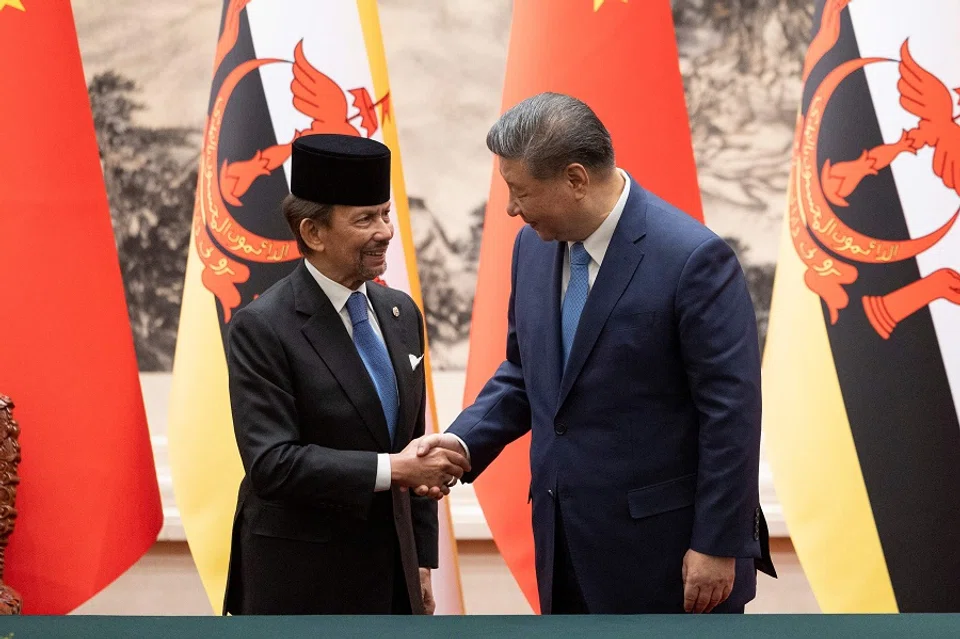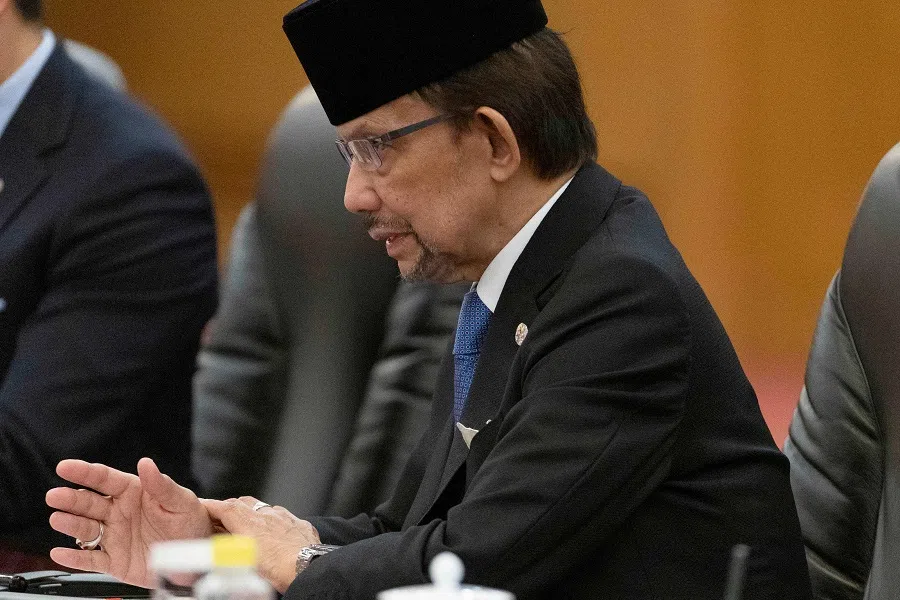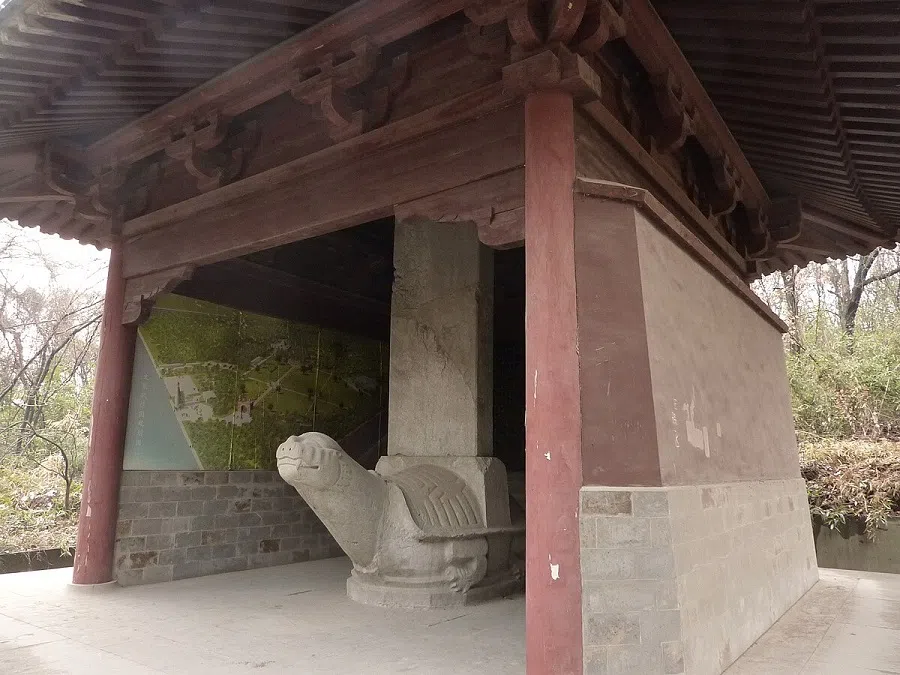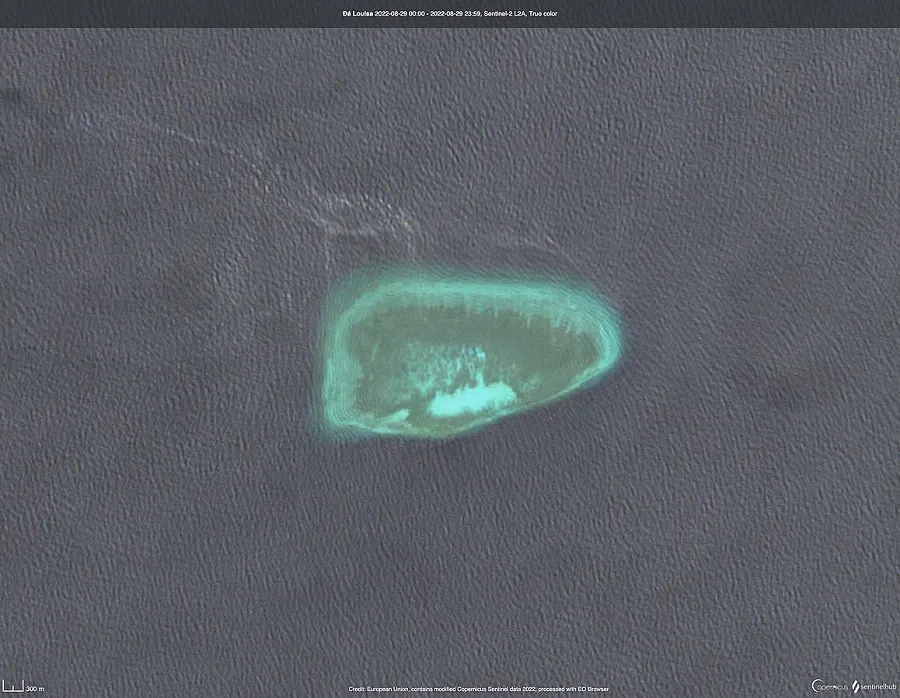China and Brunei: Navigating the South China Sea and shared futures
Most observers tend to be dismissive of China’s relations with a small country like Brunei. However, Brunei Sultan Hassanal Bolkiah’s state visit to China provides a good basis to highlight the narratives put forth by Beijing about the China-Brunei relationship. ISEAS researcher Lye Liang Fook tells us more.

While the US under President Donald Trump has moved to reset its relations with global institutions as well as America’s allies and foes, China under President Xi Jinping has sought to strengthen its ties with a host of countries.
At the turn of the Spring Festival, a number of Asian leaders from Brunei, Pakistan, Kyrgyzstan and Thailand visited China. Invariably, much attention has been on China’s relations with Pakistan (an ironclad partner), Kyrgyzstan (a key country for China’s Belt and Road Initiative) and Thailand (where China commended the strong measures the Paetongtarn government took to curb online scams), while Brunei seems to have garnered less interest given its relatively small size and low international posture. Yet Brunei is a country that aligns well with a number of China’s foreign policy narratives.
For a start, one key narrative common to all the above four countries is that, despite the tense US-China relationship that looks set to worsen and China’s difficult ties with countries such as Japan, India and the European Union, Beijing still has many foreign friends. Chinese state media reported that four Asian leaders including Brunei’s Sultan Hassanal Bolkiah made high-profile visits to China at the start of the Year of the Snake.
Against the backdrop of an ever-unpredictable international landscape, a common refrain by China is that the visit of foreign leaders indicates that many countries regard China as a key guardian of global peace and stability, and as a reliable partner in boosting win-win cooperation. Furthermore, such visits reflect China’s determination to cooperate with its neighbours for common development, and desire to build a peaceful and prosperous Asia.
Longstanding historical ties
Another narrative more specific to Brunei concerns the ties the two countries have built over the years, which should continue to serve as a good basis for growing the relationship.
Going back even further are the close historical ties China and Brunei enjoy, which are often referenced by the Chinese side and also acknowledged by the Brunei side.

Chinese state media highlighted that since ascending to the throne in 1967, Sultan Hassanal Bolkiah has visited China 12 times, with his current state visit increasing this tally to 13. This figure works out to an average of one visit every four to five years over the past 58 years — relatively frequent for a small country like Brunei. Going back even further are the close historical ties China and Brunei enjoy, which are often referenced by the Chinese side and also acknowledged by the Brunei side.
Most notably, in 1408, Sultan Abdul Majid Hassan of Boni (present-day Brunei) brought an entourage of around 150 people — including his family members — on a tributary mission to China during the reign of the Yongle Emperor during the Ming dynasty. Unfortunately, not long after arriving, the sultan fell ill and passed away. In accordance with his wishes, the body was buried in China; today, his tombstone can be found at a memorial park in Nanjing.
In recognition of these longstanding ties between the two countries, Brunei dignitaries like Prince Mohamed Bolkiah, the younger brother of Sultan Hassanal Bolkiah and then foreign minister, visited the memorial park in 1993, which was also the first visit by a Brunei foreign minister to China. Thereafter, Princess Hajah Masnah, the younger sister of Sultan Hassanal Bolkiah, also visited the memorial park on three previous occasions in 2006, 2008 and 2019.
Contribution to Brunei’s economic growth and diversification
On practical cooperation, the narrative is that the China-Brunei relationship sets an example for countries big and small to treat each other as equals and pursue mutual benefits and win-win cooperation.

In particular, Beijing has called on Brunei to build greater synergies between China’s Belt and Road Initiative and Brunei’s Vision 2035. This was emphasised when Chinese President Xi Jinping met Brunei Sultan Hassanal Bolkiah in Beijing.
One key project raised during the talks is Zhejiang’s Hengyi Group’s ongoing investments in an oil refinery and petrochemical plant in Pulau Muara Besar to build up Brunei’s downstream industries beyond oil and gas exports. Other projects that China has completed or is undertaking in Brunei include the Pulau Muara Besar Bridge (completed in 2018), the Temburong Bridge (completed in 2020), the upgrading of the Muara Port (scheduled for completion in 2027), and growing the aquaculture, agriculture and healthcare industries. These examples indicate that China’s investments are contributing to Brunei’s economic growth and diversification, a key priority in its Vision 2035.
Brunei’s low-key and non-confrontational approach to the South China Sea has been regarded by some quarters in China as a very good example of how the issue should be handled.
Dialogue and consultation on the South China Sea issue
China and Brunei have their fair share of differences, most notably their overlapping claims in the South China Sea. However, in this area, both Brunei and China have preferred to downplay their differences and even gloss over it.
At their latest meeting in Beijing, Chinese President Xi and Sultan Bolkiah stressed the importance of continued dialogue and friendly consultations between China and ASEAN to promote peace, stability and security in the South China Sea without mentioning the differences between the two countries on this issue. This was largely the same slant taken when Chinese Vice-President Han Zheng met Sultan Bolkiah for talks in Bandar Seri Begawan in November 2024.
Brunei’s low-key and non-confrontational approach to the South China Sea has been regarded by some quarters in China as a very good example of how the issue should be handled.

At the official level, China has gone further to capitalise on the low-key position taken by some ASEAN countries including Brunei to buttress its own position on the South China Sea issue. An example is Wang Yi’s claim that China has reached a four-point consensus with Brunei, Cambodia and Laos on the South China Sea following his visit to these three countries in April 2016 and before the arbitral tribunal’s award in July of the same year.
Apparently, the four-point consensus included the agreement by China and the three countries that disputes over territorial and maritime rights and interests should be resolved through dialogue and consultation by the parties directly concerned (to be read as excluding the role of the US — words in parenthesis are author’s own) and that the rights of sovereign states to choose on their own ways to solve disputes in line with international law should be respected (to be read as including China’s decision not to participate in the case brought by the Philippines against China).
Support for China’s community of shared future
Yet another narrative by China is that most ASEAN member states, including Brunei, have signed on to China’s vision of building a community of shared future, giving this vision greater currency. In the joint statement on Sultan Bolkiah’s state visit to China, it was stated that both countries look forward to strengthening their strategic cooperative partnership to work towards a China-Brunei Darussalam community with a shared future.
Going further, in his public remarks to the media before the start of closed-door talks with Sultan Bolkiah, Chinese President Xi mentioned that the two countries have reached a consensus to jointly build a China-Brunei community of shared future, an idea he apparently raised when the two leaders met in 2019 at the Second Belt and Road Forum in Beijing. However, in his response, Sultan Bolkiah appeared to be more preoccupied with practical cooperation that would bring mutual benefit to the two countries.
Beyond the bilateral aspects of their relationship, Beijing has further capitalised on its ties with Brunei to show that China’s community of shared future is gaining more international traction...

Notwithstanding this difference, Brunei’s latest move means that a total of eight ASEAN member states, except the Philippines and Singapore, have endorsed China’s community of shared future. Moreover, a bilateral cooperation plan to jointly promote cooperation within the framework of the Belt and Road Initiative was also signed during Sultan Bolkiah’s visit. China’s implicit message was that more countries are eager to join the Belt and Road Initiative despite the setback following Panama’s decision to withdraw from the initiative.
The narratives outlined above highlight the key focus in Beijing’s ongoing ties with Brunei. Beyond the bilateral aspects of their relationship, Beijing has further capitalised on its ties with Brunei to show that China’s community of shared future is gaining more international traction and that the South China Sea issue is best left to the parties directly concerned, without third-party interference.





